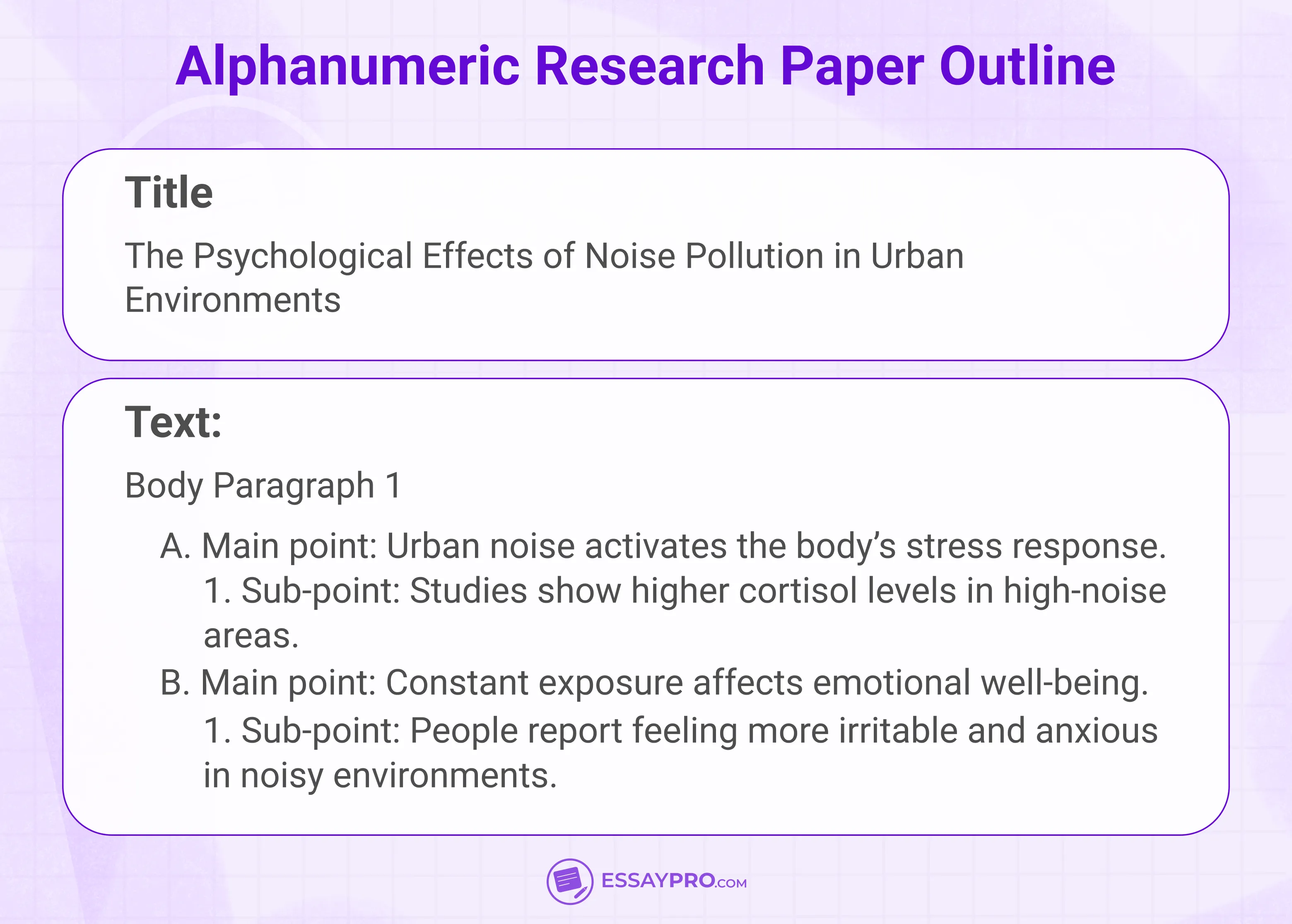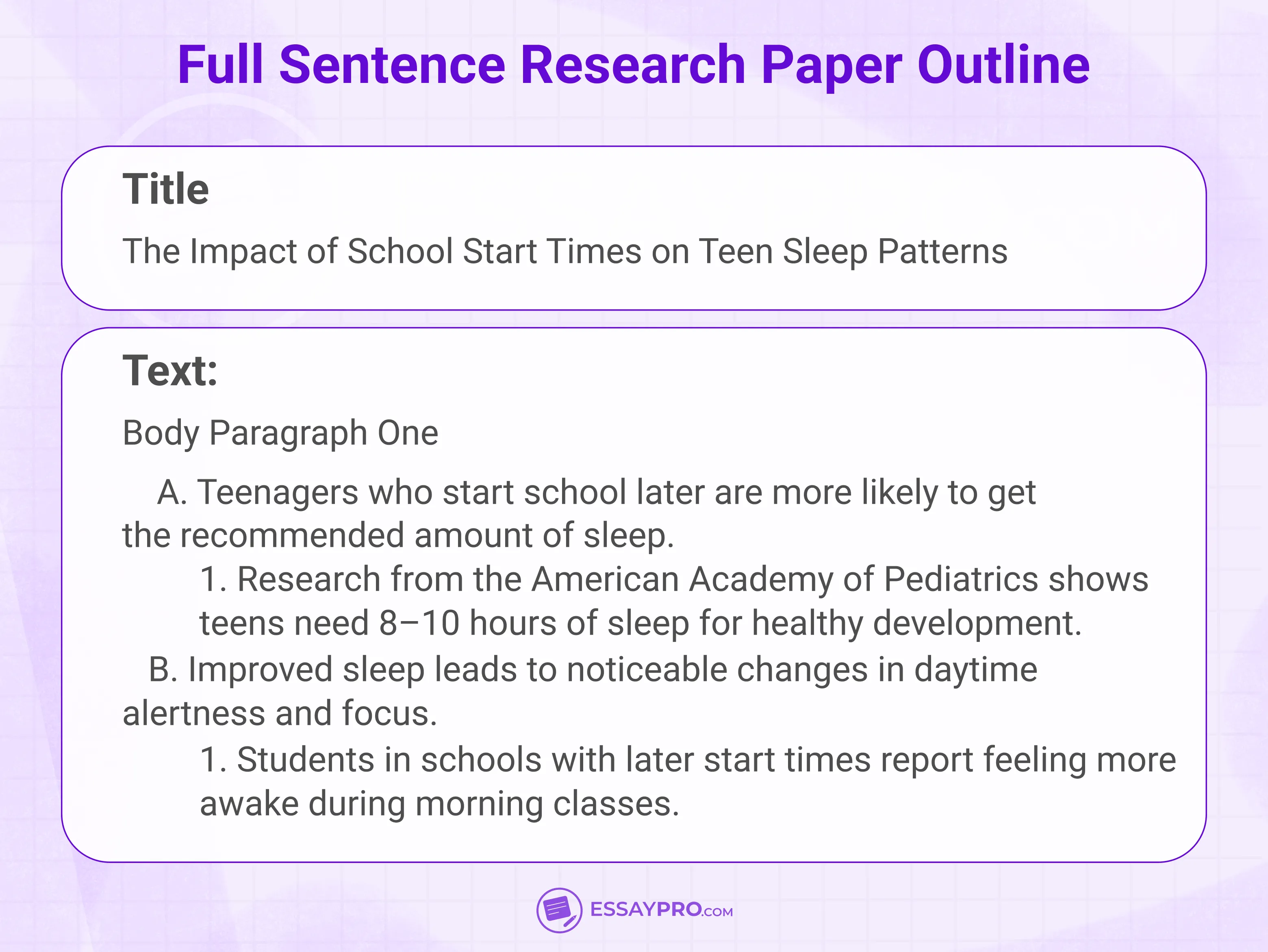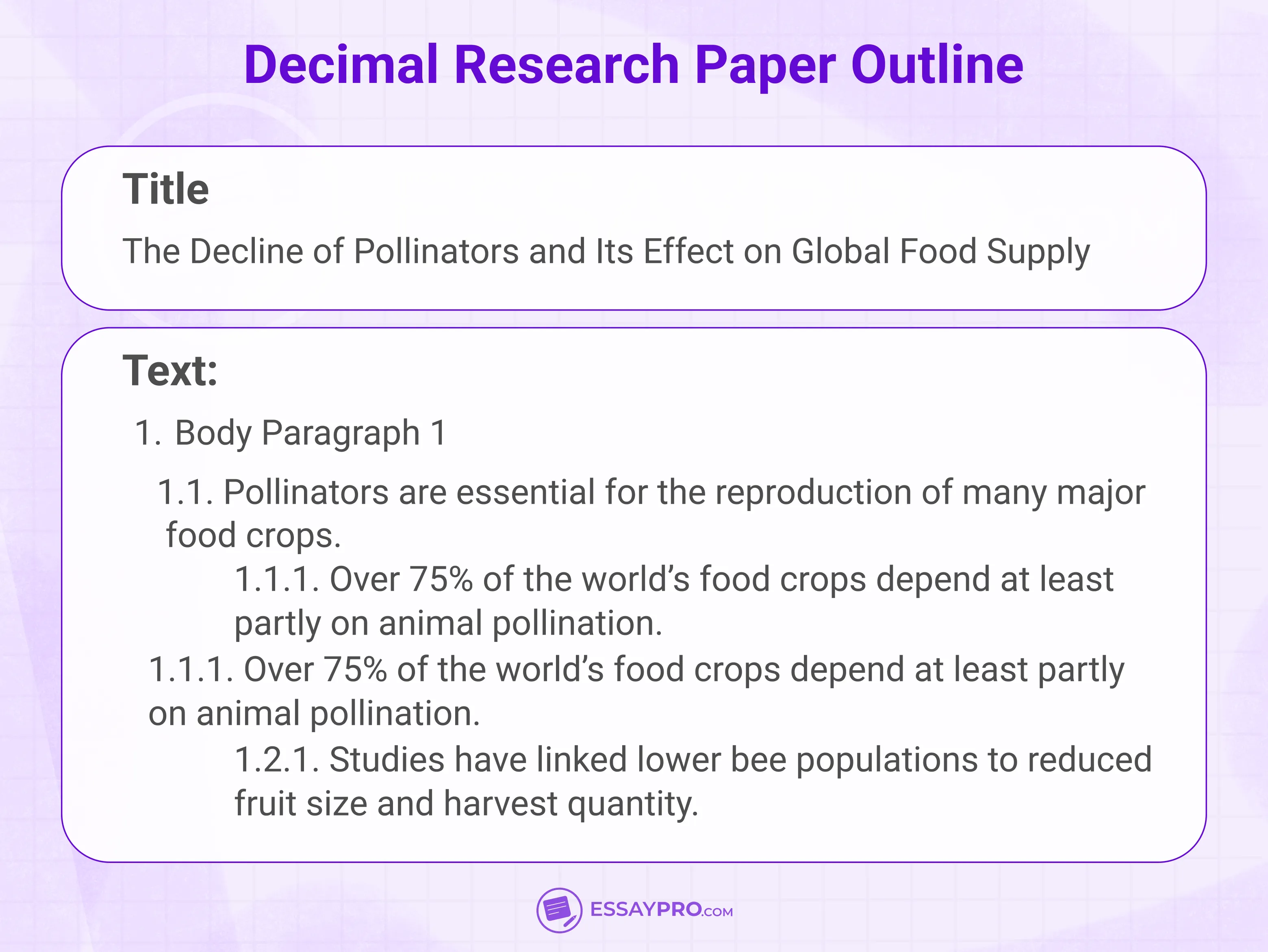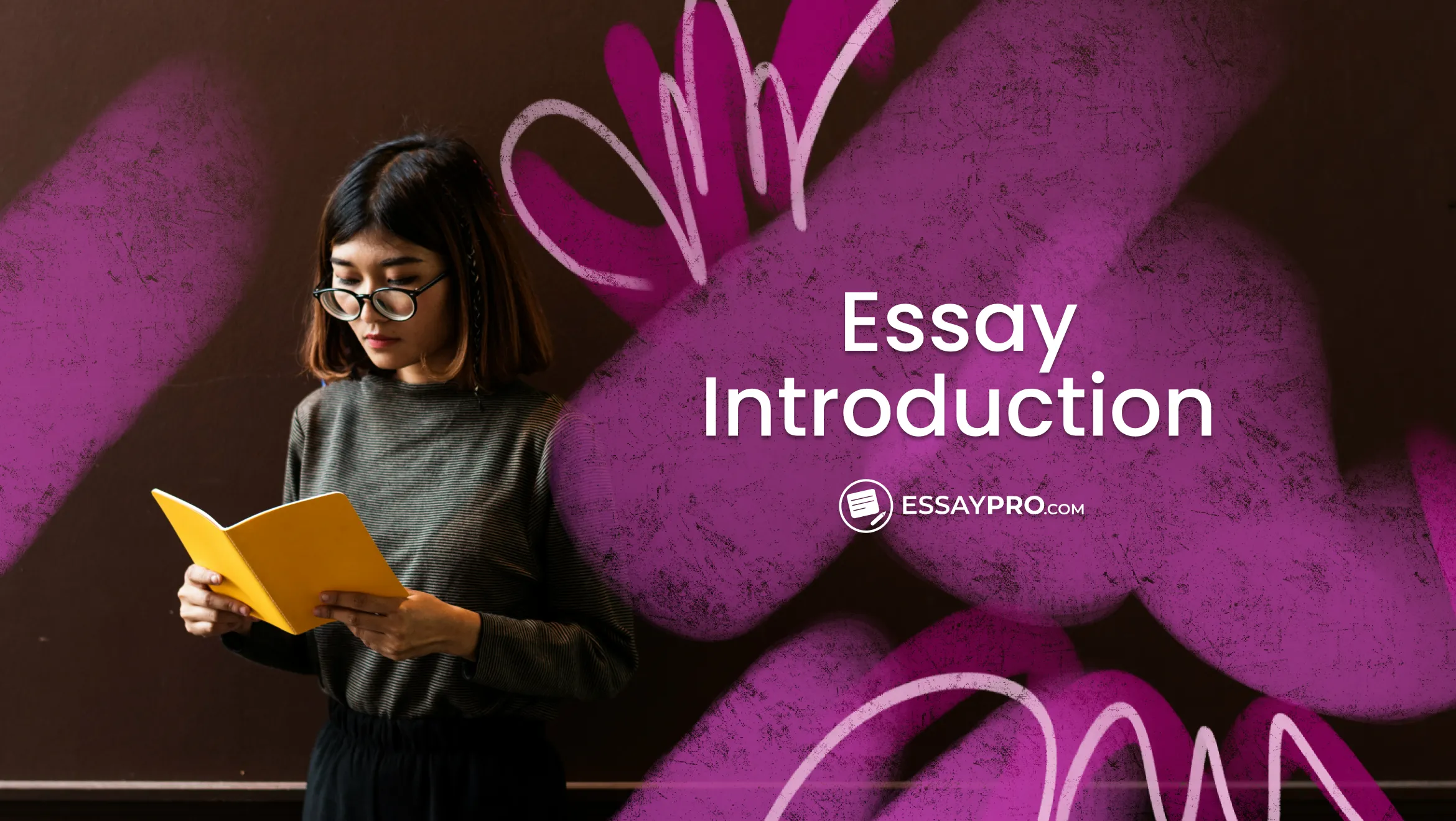A research paper outline is the roadmap to your work that helps you stay on track during the writing process. It lays everything out in advance so you don't have to scramble halfway through. A solid outline is what helps your ideas stay organized, so you know exactly where each part of your paper fits, from the hook all the way to the conclusion. Here’s how you should handle writing a research paper outline in a few clear steps:
- Choose your research topic and define your thesis.
- Break down your paper into logical sections (e.g., introduction, body, conclusion).
- List your main points under each section.
- Arrange points in a logical, progressive order.
- Make space for sources, evidence, and analysis.
By the end of this article, you'll know exactly how to create an outline from scratch. We'll teach you how to outline the content with real examples so your paper ends up clear and easy to follow. And if things still feel overwhelming after, EssayPro can always step in with professional research paper help.


Components of a Research Paper Outline
You need to understand what a research paper actually includes before you can start outlining. So, what is a research paper, exactly? It's a structured piece of academic writing that uses evidence and analysis to investigate a specific topic. Any typical academic research paper includes:
- Title Page – Shows your paper’s basic information.
- Abstract – Summarizes research and findings.
- Introduction – Gives context and ends with your thesis.
- Methodology – Describes your research process.
- Results – Presents the data and what was observed.
- Discussion – Interprets the results and highlights key takeaways.
- Conclusion – Wraps things up and reflects on what you’ve learned.
Title Page
The title page is the first thing anyone sees. It has to be clean and formatted correctly so it shows the basic information right away. It typically includes:
- Full title of the paper
- Your name
- Institutional affiliation (like your university or department)
- Course name and number
- Instructor’s name
- Date of submission
Abstract
The abstract is a short paragraph that gives a sneak peek into your entire research paper. It touches on your main question and how you approached the research, also what you found, and the main takeaway. Although it appears at the beginning, it’s often easier to write once the rest of the paper is done. By then, you’ll have a clear sense of your argument and results, which makes it much simpler to sum everything up in a few focused sentences.
Introduction
You need to write an introduction that sets the stage for your paper right away and doesn't sound generic. The first part of your research paper is what grabs the reader's attention and provides background information. A strong intro should include:
- A hook that grabs the reader’s interest
- Background information to explain the topic
- A clear thesis statement that shows what your paper will argue
Check out our article on how to start a research paper so you get a clear idea about how the first section should look.
Methodology
The methodology section walks the reader through how you carried out your research. You need to keep it detailed, so someone who wants to conduct the same experiment can follow the same process and get the same results. At first, you describe what type of research it was, qualitative or quantitative. Then, you should talk about the tools and materials you used. Finally, you can talk about how the data was collected and how you analyzed it.
Results
This section focuses solely on what you found. This isn't the section where you give any personal opinions or interpretations; you just present the data. It might include charts, graphs, observations, etc., depending on what kind of research you conducted. You need to keep this part clearly organized so the reader can instantly follow what the data says. You’ll explain what it means later, but for now, you’re just laying out the facts.
Discussion
The discussion section is where you start interpreting the results you laid out before. You should talk about what the findings prove and how they relate to the initial research questions. Mention anything unexpected or whether there were any limitations that might have interfered with the results. You can even suggest what others might research in the future based on what you found. And don’t forget to connect your research to broader themes or ideas in the field.
Conclusion
The conclusion for a research paper wraps up everything you've said so far and leaves readers with something to think about. The concluding paragraph should include:
- A restatement of your thesis (without repetition)
- A quick summary of your main points
- Final thoughts on the topic or broader implications
How to Write a Research Paper Outline?
A clear structure helps you save a lot of time when you're writing any paper. An outline is great for helping you organize your thoughts so you can decide what belongs where. Instead of figuring things out as you go, you'll easily keep your argument focused and clearly see how each section connects. You can follow a few simple steps to quickly build a simple outline from the ground up:
- Choose a focused topic and define your main research question.
- Write your thesis statement
- Break your paper into major sections: introduction, body, and conclusion.
- Add your main ideas under each section, based on what you plan to discuss.
- Arrange those ideas in a logical sense.
- Make space for supporting evidence and sources along the way.
Research Paper Outline Template
A research paper outline template can give you a solid head start whenever you're unsure how to get started. It lays out the basic structure section by section so you can clearly see how the content should be organized before you write a single paragraph. Take a look at what a proper outline should include:

Research Paper Outline Example
Take a look at a specific, well-structured outline so you get a better idea of how it should look:
Research Paper Outline Formats
The outline should also be created in a specific format, just like the references. Depending on the professor's requirements or how detailed you want to get, different formats have different perks. Here are the three most common formats used in academic writing:
- Alphanumeric
- Full-sentence
- Decimal
Alphanumeric Outline
The alphanumeric format is the most popular choice. It uses a structured hierarchy with Roman numerals for main sections, capital letters for subpoints, and numbers or lowercase letters for supporting details.

Full-Sentence Outline
This format looks similar to the alphanumeric one, but instead of short phrases, every heading and subpoint is written out as a complete sentence. It’s useful when you want to see exactly how your argument will go and how each part will be read in the final paper.

Decimal Outline
A decimal outline uses numbers to organize points into levels, like 1.0, 1.1, 1.1.1, and so on. It’s especially helpful for longer or more complex papers because it makes it easy to spot where each idea fits and how everything connects.

MLA vs. APA: Research Paper Outline Styles
Before you start, it’s important to know which format your instructor expects: MLA or APA. Each style follows different formatting rules and conventions. If you're working on a tight deadline, our research proposal writing service can help you get it right from the start, so you get a better chance at getting your study accepted.
MLA Research Paper Outline
The Modern Language Association (MLA) research paper format provides a standardized approach to documenting and formatting academic writing. Creating an MLA outline is an essential step in organizing your thoughts and ensuring a cohesive structure for your scholarly work. Here's an in-depth guide to crafting an MLA outline:

Formatting Tips:
- Ensure your outline is double-spaced.
- Use a legible 12-point font, such as Times New Roman.
- Apply consistent formatting throughout the document, including indents and headings.
- Follow MLA guidelines for citing sources both in the outline and the final paper.
Key Considerations:
- Tailor your outline to the specific requirements of your work.
- Be concise and clear in writing your outline sections.
- Consider including any necessary background information to provide context when you write an outline for a research.
- Ensure that each main point and supporting detail aligns with the central thesis.
APA Research Paper Outline
The American Psychological Association (APA) style is widely used in the social sciences, and creating an APA format research paper outline is crucial for maintaining a standardized structure. Here's a comprehensive guide to crafting an APA outline template for research paper.
Formatting Tips:
- Use a 12-point, Times New Roman font.
- Set 1-inch margins on all sides.
- Double-space the entire document.
- Create a running head in the header section.
Key Considerations:
- Use transitions between sections for smooth reader navigation.
- Integrate sources seamlessly, labeling each for reader guidance.
- Seek feedback to refine the clarity and effectiveness of your APA outline for research paper.
- Strategically employ APA heading levels for hierarchical organization.
By following these rules, you’ll learn how to cite a research paper properly and present your work in a clear and professional way, especially in the social sciences.
Goals and Benefits of a Research Paper Outline
Starting your paper without a roadmap is akin to setting sail without a compass—directionless and prone to drift. Crafting a well-structured research paper outline serves as a strategic tool with distinct goals and manifold benefits, transforming the daunting task of research writing into a purposeful journey.
Clarity in Purpose
A well-crafted outline establishes the groundwork for your study by clearly defining its purpose. It forces you to distill the essence of your research, ensuring that every section contributes meaningfully to the overarching goals of your paper.
Streamlined Organization
One of the primary goals of an outline is to streamline the organization of your ideas. By delineating the key components—introduction, main points, evidence, and conclusion—it provides a systematic structure that prevents your paper from becoming a chaotic jumble of thoughts.
Enhanced Focus and Efficiency
When you write an outline for a research paper, it acts as a focal point, directing your attention to the core objectives of your study. It serves as a roadmap, guiding you through each section with precision and efficiency, eliminating the risk of veering off course into tangential or irrelevant details.
Seamless Transitions
Achieving a seamless flow from one section to another is a distinctive benefit of a well-crafted outline. It allows for the strategic placement of transitions, ensuring that your ideas connect coherently and enabling readers to follow your argument with ease.
Time Management and Planning
Crafting an outline isn’t just a preparatory step; it's a time-management strategy. It compels you to allocate time effectively to each section, preventing procrastination and facilitating a more structured and manageable writing process.
Revision and Refinement
The iterative nature of outlining allows for continuous revision and refinement. It enables you to assess the coherence of your research essay topics, identify gaps in logic, and refine your arguments before delving into the full paper, saving time and effort in the long run.
Thesis Alignment
Perhaps most crucially, an outline ensures that every main point and supporting detail aligns harmoniously with the central thesis. This alignment not only strengthens the overall argument but also reinforces the thesis as the guiding force behind your research.
Final Thoughts
A well-organized outline is what helps you figure out what your paper is going to say. If you've ever felt like you were stuck mid-paper, chances are the outline was the missing step. Here’s what to keep in mind as you get started:
- A good outline sharpens your argument and shows you how each part connects.
- Choose a format that fits your assignment and thinking style: alphanumeric is classic, full-sentence is more detailed, and decimal is great for layered topics.
- MLA and APA have their own rules for structure, so make sure your outline matches the style your instructor expects.
- Starting with structure means fewer rewrites and a much smoother writing process.
If creating an outline and turning it into a structured paper still feels like too much work, EssayPro's cheap research paper writers can work with you from the planning stage.
Can't Structure Your Paper?
EssayPro's professional experts will help you turn your ideas into well-organized research papers.
FAQ
What Is a Research Paper Outline?
An outline is a map for your entire paper. It lays out the main parts: intro, body, and conclusion, and shows how your ideas are connected to each other.
How to Write an Outline for a Research Paper?
First, pick your topic and figure out what point you want to make: that’s your thesis. Then break your paper into sections: intro, body, and conclusion. Write down the main ideas and list any notes and sources you plan to use under each section.
What Does a Research Paper Outline Look Like?
A research paper outline looks like a structured list. You’ll usually see Roman numerals for big sections, capital letters for subpoints, and numbers for smaller details. It depends on the format and how detailed you want to be.

Daniel Parker
is a seasoned educational writer focusing on scholarship guidance, research papers, and various forms of academic essays including reflective and narrative essays. His expertise also extends to detailed case studies. A scholar with a background in English Literature and Education, Daniel’s work on EssayPro blog aims to support students in achieving academic excellence and securing scholarships. His hobbies include reading classic literature and participating in academic forums.
- The Basic Outline of a Paper. (n.d.). https://academics.umw.edu/writing-fredericksburg/files/2011/09/Basic-Outlines.pdf
- SOB Writing Guide -13 Example Outline for a Research Paper TITLE PAGE a. Select an informative title. (n.d.). https://business.tcnj.edu/wp-content/uploads/sites/219/2011/08/WG-Pg-13-Example-2011-2012.pdf






